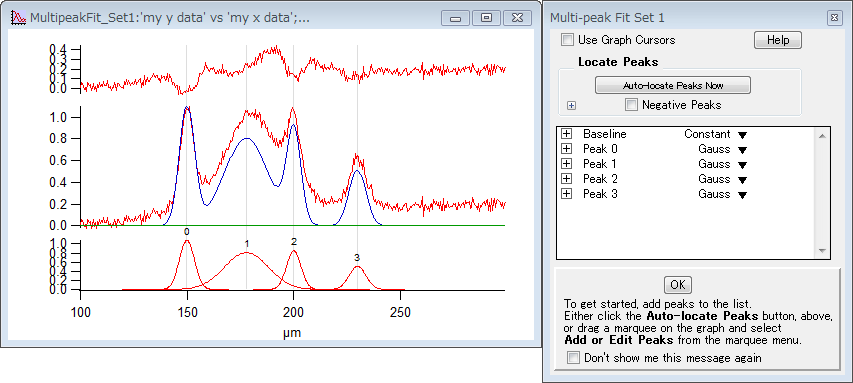

To import tab-delimited text data to a graph window, the "Other Text Data" option must be selected. To import a foreign file, select File -> Open then in the standard dialog, change the "Enable" popup menu either to "All Files", or to the desired file format.

Three different baseline subtraction algorithms are available. Subtract the steady-state level from every trace in a group or window. Fitted parameters accumulate in the log window. Optionally append the fitted curve to the graph. Type in any equation and fit it to a data trace using general curve fit. Standard linear regression, and fast multi-exponential fits. Linear, Exponential and General Curve Fit Several different templates can be used simultaneously. It can be used to identify, capture and filter spontaneous synaptic events, or extracellular action potentials. It uses a sensitive 'sliding template' algorithm to identify events that match a specific time course (Clements and Bekkers, Biophys J 73:220-229). Measure peak amplitude and location, rise-time, width and onset.Ī sophisticated 'Event Detection Package' is included. Find the largest peak in a trace, or all peaks greater than a threshold amplitude. Compute basic statistics for each column in a table.Ī table of results from a single 'cursor measurement', as shown aboveĪ current-voltage plot generated directly from the above table of resultsĪutomatically find peaks and measure their amplitudes and shape parameters. Combine and transpose tables, then create a graph from the results. Simultaneous 'cursor measurement' of the amplitudes of all eleven traces in both the 'Membrane Voltage' group and the 'Current' groupĪnalysis results accumulate as tab-delimited tables in the 'log' window. Temporarily mask traces to exclude them from analysis. Place two vertical cursors on a graph and between then analyze the data points between the cursors.įlexible analysis of graphs with multiple traces, or groups of traces. Optionally measure the x-y location of each click, or the distance between pairs of clicks. Multiple mouse clicks measure the amplitudes of several features.

Measuring amplitudes is as simple as point and click.


 0 kommentar(er)
0 kommentar(er)
